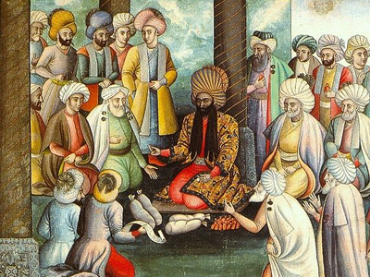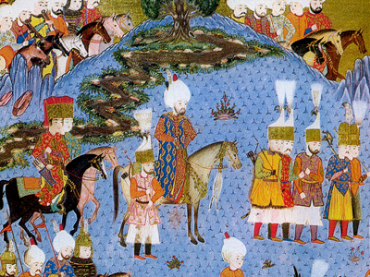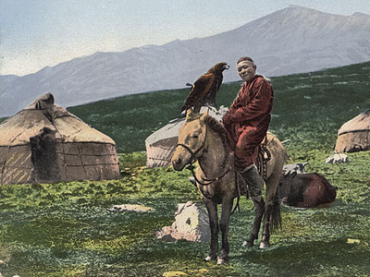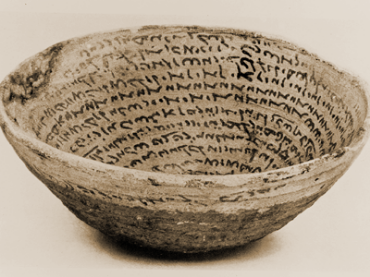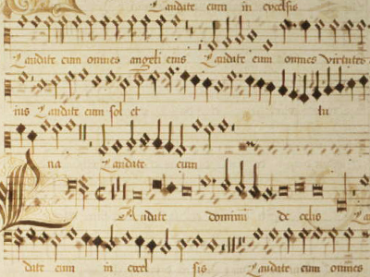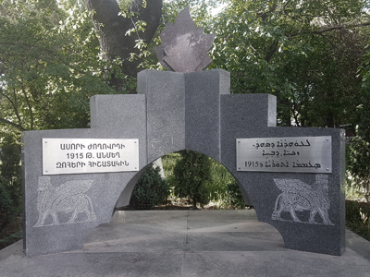History
Une enfance juive a Istanbul (1911-1929)
Series: Les Cahiers du Bosphore 14
ISBN: 978-1-61143-738-6
This memoir is one of only a handful written by Turkish Jews. It chronicles a childhood full of hardships as well as Jewish life in Istanbul in the first decades of the twentieth century.
$139.00
Beyond the Language Frontier
Studies on the Karamanlis and the Karamanlidika Printing
Series: Analecta Isisiana: Ottoman and Turkish Studies 110
ISBN: 978-1-61143-739-3
This collection of articles concentrates on the Karamanli people and the Karamanlidika Press of the late nineteenth and early twentieth century. It presents and discusses formerly unknown material from the Ottoman archives.
$140.00
Du socialisme ottoman à l’internationalisme anatolien
By Paul Dumont
ISBN: 978-1-61143-740-9
This collection of articles offers a comprehensive study of the roots of Socialism in the Ottoman Empire. It emphasizes the heterogeneous character of leftist movements in Turkey as well as their multi-ethnic history.
$207.00
Figures anonymes, figures d’élite
Pour une anatomie de l’Homo ottomanicus
Compiled and edited by Meropi Anastassiadou & Bernard Heyberger
ISBN: 978-1-61143-741-6
This collection of papers by scholars from universities in France, Germany and Switzerland explores the complexity of Ottoman identity. By studying families and individuals with marginal backgrounds, it nuances the image of the Homo Ottomanicus.
$137.00
Comptines de Turquie
D'apres les archives de Pertev Naili Boratav
By Rémy Dor
ISBN: 978-1-61143-742-3
This collection of more than 200 Turkish nursing rhymes from all regions of Anatolia is the first of its kind. It constitutes a rich source for those interested in Turkish folklore and oral traditions.
$145.00
Le mythe de Constantinople et l’opinion publique en Russie au XIXe siècle
Series: Les Cahiers du Bosphore 2
ISBN: 978-1-61143-743-0
This doctoral dissertation explores the mythical position of Constantinople among Russian intellectuals in the nineteenth century. It shows the changing rationales given for the dream of conquest as well as its influence.
$117.00
Le Capitaine Sarrou un officier français au service de l’empire ottoman
Dix ans séjour en Turquie ou la réorganisation de la gendarmerie ottomane 1904-1914
Series: Les Cahiers du Bosphore 25
ISBN: 978-1-61143-746-1
This book follows a French officer through ten years of military service in Macedonia and Turkey from 1904 to 1914. It offers a detailed account of this eventful historical period from a military perspective.
$116.00
Romanie byzantine et pays de Rûm turc
Histoire d’un espace d’imbrication greco-turque
Series: Les Cahiers du Bosphore 10
ISBN: 978-1-61143-804-8
This book presents a history of Greco-Turkish relations which emphasizes the exchange between the two cultures starting from Byzantine times. It contests the common military approach to the history of these cultures and their relationship.
$149.00
Anthologie d’historie ottomane
Les deux premiers siècles (XIVe - XVe siècles)
Series: Les Cahiers du Bosphore 30
ISBN: 978-1-61143-805-5
This anthology of excerpts from primary sources in Ottoman history is the first of its kind. It presents and comments a number of texts dating from the first two centuries of the Ottoman Empire.
$148.00
Byzantins et ottomans
Relations, interaction, succession
ISBN: 978-1-61143-806-2
This book offers a comprehensive study of the many points of contact, influence and exchange between Byzantines and Ottomans in medieval times, from linguistic exchange to philosophical encounters.
$154.00
Islam mystique et révolution armée dans les Balkans ottomans
Vie du Cheikh Bedreddîm Le ‘Hallaj des Turcs’ (1358/59-1416)
Series: Les Cahiers du Bosphore 12
ISBN: 978-1-61143-807-9
This book analyzes the life and work of Sheikh Bedreddin of Samavna (1358/9-1416) and his influence on the development of mystical Islam in the Balkans as well as his political importance.
$129.00
Les Turcs au Moyen-age
des Croisades aux Ottomans (XIe - XVe siècles)
ISBN: 978-1-61143-808-6
This collection of articles concentrates on the medieval history of the Turks, Seljuks, Turkmen and Ottomans. It emphasizes the multiple currents of influence linking the late Byzantine Empire, the early Ottoman Empire and humanist Europe.
$124.00
Les Ottomans, les Safavides, et la Géorgie, 1514-1524
ISBN: 978-1-61143-809-3
This book collects six studies on the interactions between Ottomans and Safavids in the early sixteenth century. It presents a number of interesting documents in original, transcription and translation.
$124.00
Problèmes et approches de l’histoire ottomane
Un itinéraire scientifique de Kayseri à Egriboz
ISBN: 978-1-61143-810-9
This collection of selected articles by Ottoman historian Evangelia Balta discusses a variety of subjects within Ottoman social and economic history, all based on meticulous archival research.
$163.00
Les relations entre turcs et juifs dans la turquie moderne
ISBN: 978-1-61143-811-6
This book investigates the relationship between Turks and Jews in the Turkish Republic. A variety of sources, from popular literature to Islamist writings, are included in this unique study.
$128.00
Mémoires posthumes et inachevees de Jacques Abravanel, juif portugais, salonicien de naissance, stam
By Jacques Abravanel; Preface by Rifat N. Bali
ISBN: 978-1-61143-812-3
This book is the first publication of the unfinished memoir by the Portuguese Jew Jacques José Abravanel (1906–1993). For almost sixty years he was Portugal’s honorary consul in Istanbul and an active defender of ladino language.
$123.00
La mission des augustins de l’assomption à Eski-Chéhir, 1891–1924
ISBN: 978-1-61143-813-0
This book studies a mission by Augustinians of the Assumption in Eskisehir from 1891–1924. It also offers an overview of the characteristics of the Christian missions in the Ottoman Empire.
$119.00
Manifestations of Sainthood in Islam
Editor Grace Martin Smith; Associate Editor Carl W. Ernst
ISBN: 978-1-61143-819-2
This collection of papers by various scholars discusses a wide range of practices and beliefs relating to saints in Islam. The studies also demonstrate the influence of sainthood on political structures in many societies.
$162.00
Studies in Ottoman and Turkish History
Life with the Ottomans
ISBN: 978-1-61143-820-8
This rich collection of articles illustrates the range of Stanford J. Shaw’s more than forty years of research. Topics covered include the nineteenth-century Tanzimat reforms, Turkey in the World Wars, and the Ottoman archives.
$239.00
Studies in Ottoman History in Honour of Professor V.L. Mélange
Edited by Colin Heywood & Colin Imber
ISBN: 978-1-61143-822-2
This collection of papers in honour of Professor V. L. Ménage contains articles written by many leading Ottoman historians from around the world in English, French and Italian.
$186.00
L'Expansion nestorienne en Asie
By François Nau
Series: Kiraz Classic Archaeological Reprints 16
ISBN: 978-1-61143-832-1
This early history of the Church of the East was part of a volume issued to commemorate the exhibition of thirty Syriac inscriptions from Central Asia at the Musee Guimet.
$168.00
The Nestorian Monument in China
Series: Kiraz Chronicles Archive 50
ISBN: 978-1-61143-838-3
The text in Chinese and Syriac, with English translation and notes, of the Nestorian Stele, set up in Changan in 781, with a history of the Nestorian Christians of China and their final state as a secret society.
$203.00
Zum Feuerkultus bei den Mongolen
By N. N. Poppe
Series: Analecta Gorgiana 951
ISBN: 978-1-61143-859-8
The fire cult of the Mongols, the names and images of the fire-god, the origins of the cult in Buddhism, its mythic connections, and its festivals.
$34.00
A Ruined Nestorian City in Inner Mongolia
Series: Analecta Gorgiana 954
ISBN: 978-1-61143-871-0
Owen Lattimore, a historian of Central Asia, presents the first report on Kwei-hua, the ruined city of the Syriac-Ongut Turks.
$35.00
An Eastern Embassy to Europe in the Years 1287-8
Series: Analecta Gorgiana 957
ISBN: 978-1-61143-874-1
Rabban Sauma, a Syriac monk, travelled to Europe in 1287 as a diplomatic representative of the Mongols; this is his own account of his travels, the first translation into English.
$35.00
Filter by
Filter by price
Filter by manufacturer

